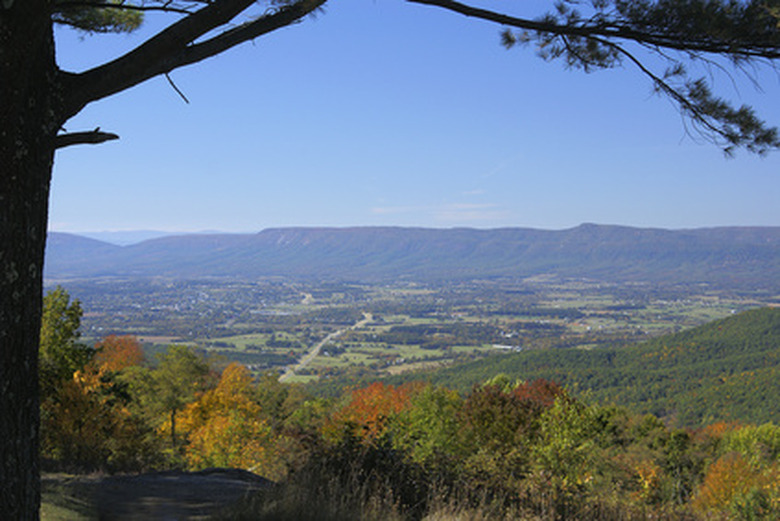What Type Of Soil Is In The Blue Ridge Mountain Region?
The Blue Ridge Mountains are renowned for their beauty and blue appearance from a distance. The soils and shape of the Blue Ridge Mountains are consequences of the region's geologic past. Characterized by steep slopes and hard rocks, the soils of the Blue Ridge Mountains are not renowned for their agricultural fertility, but they do give rise to some of the most diverse flora in the nation.
Geography
Geography
The Blue Ridge region is a narrow physiographic province ranging from 5 to 20 miles in width and extending from Georgia in the south to Pennsylvania in the north. The Blue Ridge Mountains are the first mountains that one sees in the Mid-Atlantic United States when driving west from the Atlantic Ocean. They are bordered by the Piedmont region to the east and the Great Appalachian Valley to the west.
Geology
Geology
The soils of the Blue Ridge Mountain region are a product of their geologic history and weathering processes. The mountains seen today were once giants, rivaling the Himalayas in size, and were formed when Africa and North America collided more than a billion years ago. The rocks formed over time; prominent today are hard igneous and metamorphic rocks such as granite, gneiss and marble. On the western slopes of the region are some softer sedimentary rocks. The mountainous terrain and predominance of hard rocks makes most of the soils in the region thin and vulnerable to erosion from wind and rain.
Types of Soil
Types of Soil
Because the basement rock of the region is composed of hard igneous and metamorphic rock that is resistant to weathering, in addition to the steep slopes and frequent rainfall, soils do not have the opportunity to build up over time in the Blue Ridge Mountain region. There are, however, pockets of soil that are fertile and have long supported lush agricultural practices. These areas are the result of weathering processes on ancient rocks formed from lava flows and pools due to volcanic activity in the past.
Farming
Farming
Farms in the Blue Ridge regions are conspicuously absent when compared with the rest of the state on agricultural maps. There are, however, small areas of flat land that have fertile soils and can produce healthy agricultural production. These small pockets of healthy soil have long been supporting people who have settled in the mountains. Famous homesteads like Thomas Jefferson's Monticello and James Monroe's home at Ashlawn were built over these small areas of fertile soil.
Interesting Facts
Interesting Facts
The Blue Ridge Mountains get their name from the fact that they often appear bluish in color from a distance. The reason for this blue appearance comes from the numerous trees that grow in the soils of the mountains. Many trees in the region (especially oaks) release a chemical called isoprene. Isoprene acts as an aerosol when mixed with other chemicals in the atmosphere and creates a haze in the air above the trees, making the mountains appear blue.
References
- Virginia Cooporative Extension: Agronomy Handbook Part VI: Soils of Virginia
- Virginia Cooporative Extension: Virginia Farmstead Assessment System: Site Evaluation: Groundwater, Soils, & Geology
- Virginia Department of Conservation and Recreation: Natural Heritage: Agricultural Model
- William and Mary Geology Department: Geology of Virginia
- James Madison University Department of Geology and Environmental Studies: The Geologic Evolution of Virginia and the Mid-Atlantic Region
Cite This Article
MLA
Campbell, Damien. "What Type Of Soil Is In The Blue Ridge Mountain Region?" sciencing.com, https://www.sciencing.com/type-blue-ridge-mountain-region-6554913/. 24 April 2017.
APA
Campbell, Damien. (2017, April 24). What Type Of Soil Is In The Blue Ridge Mountain Region?. sciencing.com. Retrieved from https://www.sciencing.com/type-blue-ridge-mountain-region-6554913/
Chicago
Campbell, Damien. What Type Of Soil Is In The Blue Ridge Mountain Region? last modified March 24, 2022. https://www.sciencing.com/type-blue-ridge-mountain-region-6554913/
